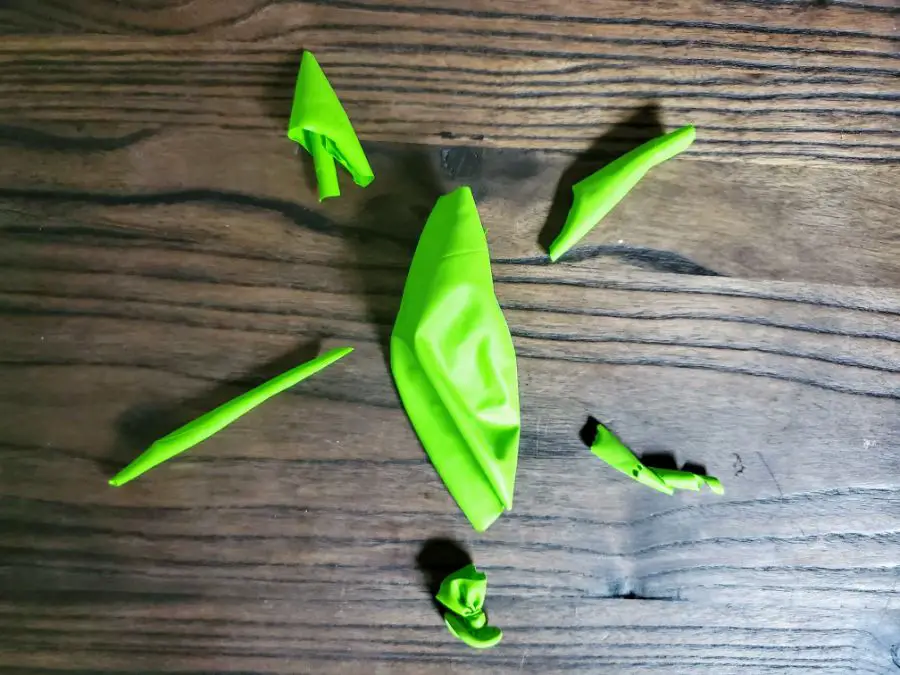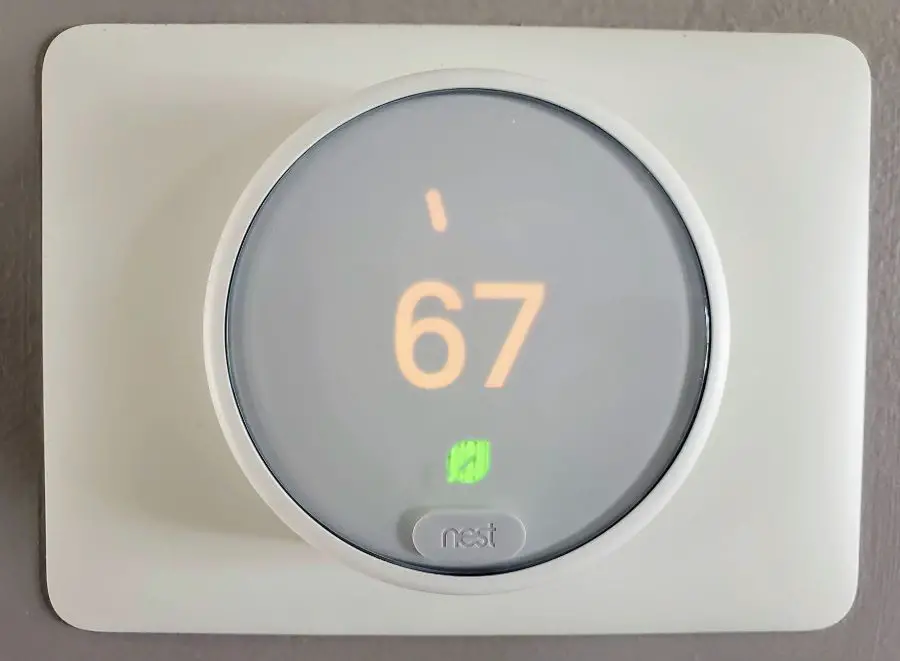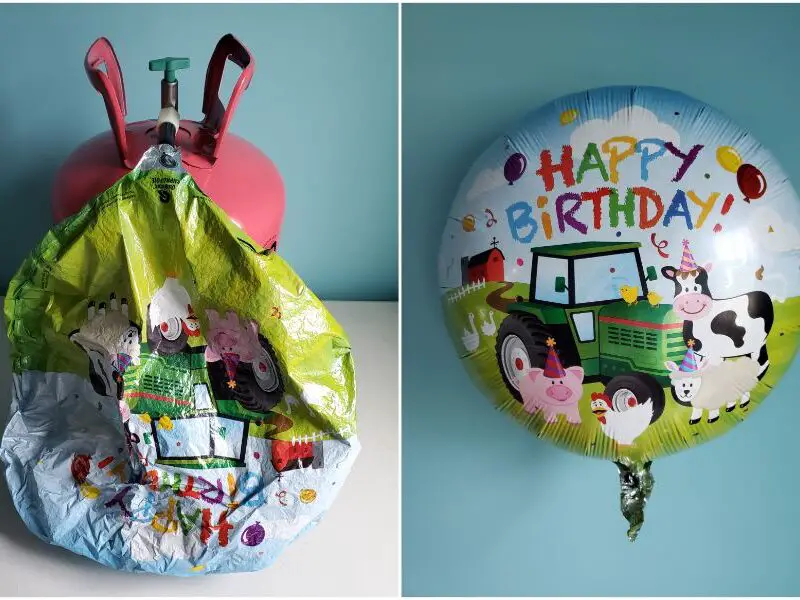Have you ever been sitting there minding your own business and then out of nowhere a balloon pops and scares you half to death? It’s happened to me so many times that I started asking – why do balloons pop randomly?
With three young kids, it seems like I always have a balloon floating around my house on any given day. I scare very easily, and I nearly jump out of my skin when a balloon pops unexpectedly.
Nobody went near it, so how could this happen?
It turns out that there’s a few different possibilities, from the balloon being overinflated to it being exposed to heat to it being made with low quality materials.
Read on to learn more about why balloons pop randomly.
1. The Balloon Was Overinflated
First, it is important to note that when answering the question – why do balloons pop randomly – it is almost always going to happen with latex balloons. Mylar, or foil, balloons are less flexible and more durable.

When a latex balloon is filled, the elastic stretches and thins. It doesn’t matter if it is filled with helium, air, or even water.
Latex is permeable, which means it’s a material that allows liquid or gas to pass through it. There are little tiny holes that slowly let the gas leak out. This is why balloons deflate over time.
Because of this, as the latex stretches, it weakens. The gas inside wants to get out. So if the material is stretched beyond what it is made to handle, it will eventually reach a breaking point and pop.
Sometimes it will be immediate. Or, it might take a little bit of time – when you are least expecting it. Thus, seemingly popping at random.
Latex balloons come in a range of sizes. 9 inch and 12 inch are common, but there are 10 inch and 11 inch balloons available, as well.
This means that if you have 12 inch balloons, it should be filled up to 12 inches wide, and no more. It is recommended that balloons be filled up to no more than 90% of their capacity.
There is room for it to be filled more, but it’s important to leave some space. This ensures that it will hold up to the pressure of inflation and allows for other outside factors, such as temperature changes.
Below is a side by side comparison of what a balloon should and should not look like when inflated. In this example, it is a 12 inch latex balloon.

2. Static Electricity Popped the Balloon
Static electricity can strike at any moment. And, it can have shocking consequences for your balloons.
Everything is made up of atoms. These atoms are neutrally charged with an equal amount of protons (positive) and electrons (negative).
Electrons tend to move around. So, when two objects rub together, some of the electrons will move to other object.
This causes that object to have more electrons than protons, meaning it is negatively charged. This is when static electricity occurs.
The electrons stay with that object until they are released. Because opposites attract, this usually is when the object comes in contact with a positively charged object, or a conductor like metal.
When the release happens, a shock occurs. It can certainly happen with balloons, which is why the balloon may pop randomly.

Static buildup is higher in cold and dry environments. So, if your house or your venue is on the drier side, there’s more of a chance for that static charge to strike.
The chance of static is higher in carpeted areas, as well. As people shuffle across carpet, static builds up.
So, keeping the humidity higher and using static guard are both good ways to prevent balloons from popping randomly due to static electricity.
Learn more about how static electricity works.
3. The Balloon Was Exposed to Higher Temperatures
All balloons, helium-filled or air-filled, are affected by temperature.
Have you ever noticed when you bring balloons out into the cold, they shrink? This is because the gas molecules inside slow down and contract when they’re cold.
In other words, they get smaller and clump together in order to conserve heat. If the molecules inside are taking up less space, then the balloon that is containing them becomes smaller.
The opposite is true when exposed to heat.
In warmer temperatures, the molecules speed up and move away from each other. Therefore, the gas molecules inside the balloon will expand.
If they’re moving faster, they’re taking up more space and creating more pressure inside. As the pressure builds and the molecules expand, the balloon will start to weaken.
Just like when a balloon is overinflated, the latex material can only withstand so much force before it eventually bursts.
Also, the more temperature changes a balloon is exposed to, hot – cold – hot -cold, the faster it will weaken the integrity of the balloon. The balloon may then pop at a random time, sooner than we expected.
Balloons look their best at room temperature and will hold up longer.

Regulating the temperature and limiting how many environment changes the balloons are exposed to are both good ways to prevent balloons from popping randomly.
Click to learn more about how temperature affects balloons.
4. Something on the Floor (or Wall) Popped the Balloon
Sometimes it is as simple as the balloon came in contact with something sharp. And no, it doesn’t have to be as obvious as a sharp needle.
Sure, if a balloon comes in contact with a nail sticking out of a wall or thumbtack lying on the ground, it will pop. But, sometimes it’s a little more random than that.
I have dogs, and sometimes my house is full of animal hair. In the right circumstance, animal hair can be as sharp as a pin.
If a balloon is floating around the house and it hits a piece of hair just right, POP! It seems unlikely, but it certainly is still a plausible explanation for why a balloon would pop randomly.

5. The Balloon Was Made with Low Quality or Faulty Materials
Not all balloons are created equally. Just like with most products, there are high quality and low quality versions on the market.
A higher quality balloon is going to hold up to the pressure that is applied to it. Ideally, if a balloon is used properly, it should hold up to inflation and slowly deflate, without popping, over time.
A lower quality balloon is most likely made with thinner latex material. The latex may weaken much faster, causing the balloon to pop unexpectedly.
Or, with a bit of bad luck, maybe it was just a faulty balloon. These things can happen, unfortunately.
Final Thoughts
There are many reasons why a balloon might pop randomly. And, in the moment, we may not always know the direct cause or causes.
But, there is always a risk that a balloon may pop after it’s inflated. If you take the proper care, you can try to avoid it.
Or, you might just have a bit of a scare. We’ll certainly survive it, which is more than we can say for the balloon!
If you need to intentionally pop your balloons and want to avoid the scare, check out How to Pop Balloons Quietly.




